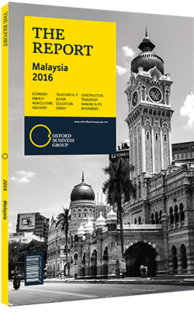Malaysia creating ideal innovation environment for ICT
New targets have been set to leverage the use of digital technology to drive the country’s economic growth beyond 2020. As the driver of the Digital Malaysia initiative, the Malaysia Digital Economy Corporation (MDeC) is drafting the new targets supported by the initiatives laid out in the 2016 budget. In 2015 ICT-based companies contributed 18% to GDP, surpassing the 2020 target of ICT contributing 17% to GDP, according to MDeC. In addition, the 2020 goal to promote ICT use by government, businesses and citizens is already well under way.
Funding
The 2016 budget allocated RM1.5bn ($371.3m) to the Ministry of Science, Technology and Innovation, RM100m ($24.75m) to the Malaysian Innovation Agency and RM200m ($49.51m) to establish the Small and Medium-sized Enterprises (SME) Technology Transformation Fund under the SME Bank to provide soft loans at 4% interest rates. For its part, the Malaysian Global Innovation and Creativity Centre (MaGIC) was a recipient of allocations totalling RM35m ($8.66m) under the 2016 budget – including RM10m ($2.48m) for the Corporate Entrepreneurs Responsibility Fund – to establish itself as a leading regional entrepreneurship and innovation centre. MaGIC’s remit includes guiding, counselling and training entrepreneurs by monitoring their performance, housing an integrated database and incubators, assisting with IP patenting, and providing funding facilities and business matching.
MaGIC’s assistance is much needed. As 90% of Malaysia’s SMEs have not adopted ICT practices, according to KT Ong, Dell Malaysia’s general manager of commercial business. At least 30% of the country’s SMEs need to adopt ICT to remain competitive, Ong told the Borneo Post in late 2015, a percentage lower than that in developed countries, where at least 50% of SMEs have adopted ICT. Ong said, “There are more than 600,000 SMEs in Malaysia, but the percentage of SME owners who believe in ICT is very small.”
Capital Required
SME’s low ICT adoption rate can be attributed to the hefty costs associated with doing so. In such cases, outside capital is often needed to build a company’s ICT backbone and prowess. However, despite an increase in demand for capital, only about nine private venture capital firms operate in Malaysia, and even so, as much as 60% of venture capital funds still originate from government sources. To increase the amount of venture capital assistance in the country, Malaysia Venture Capital Management (Mavcap) was formed by the government in 2001 under the purview of the Ministry of Finance. Considered Malaysia’s largest venture capital company, its main sphere of activity involves assisting the country’s start-up ICT companies. As such, Mavcap makes direct investments to such companies ranging from RM1m ($247,535) to RM20m ($4.95m).
Mavcap invests in up to 10 firms per year. It maintains an up to 40% equity stake for three to eight years during which time it provides advice and guidance. Once the company shows sure signs of success, Mavcap withdraws. By September 2015 Mavcap had invested RM66.22m ($16.39m) in ICT start-up companies for the year, up from investments of RM60.62m ($15m) for the whole of 2014. Mavcap also set up a $30m fund with local telecoms giant Axiata Group in 2014 to promote Malaysia’s digital economy.
Another collaboration has seen Mavcap partnering with Shanghai-based Gobi Partners in a RM212m ($52.48m) deal to launch a new fund to assist start-up companies in South-east Asia and China. Mavcap’s partnership with Gobi represents a good opportunity for the country’s ICT start-up companies, according to Jamaludin Bujang, Mavcap’s CEO. He told Malaysian news site The Star Online in September 2015 that “the partnership with Gobi provides the exposure for businesses to capture local and China markets.” Thomas Tsao, Gobi managing partner and co-founder, said the group is hoping to invest in 25-35 firms in Malaysia.
You have reached the limit of premium articles you can view for free.
Choose from the options below to purchase print or digital editions of our Reports. You can also purchase a website subscription giving you unlimited access to all of our Reports online for 12 months.
If you have already purchased this Report or have a website subscription, please login to continue.

